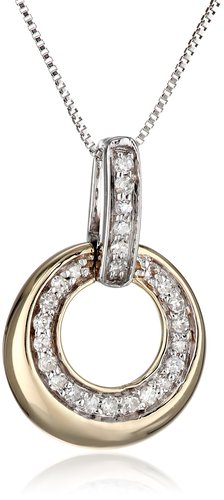What Are Blue Diamonds?
Natural blue diamonds usually owe their color to traces of the chemical element boron that can be found within the structure of such stones. Occasionally, certain amounts of hydrogen can also be detected in diamonds of this color.

Natural blue diamonds usually owe their color to traces of the chemical element boron.
Blue diamonds that occur naturally are very rare and therefore among the most expensive colored stones you can find on the market.
For example, a 1-carat blue diamond of good quality can cost upwards of $100,000.
Evaluating the Color of Blue Diamonds
Color is one of the most important quality determinants for fancy-color diamonds, and blue diamonds are no exception.
This characteristic is further broken down into three separate color attributes: hue, saturation and tone.
Hue: You can think of hue as the visible color a stone exhibits. In the case of blue diamonds, the primary hue is blue.
There can be secondary hues of a different color – the most common ones found in blue diamonds are green and gray. The most valuable blue diamonds either have secondary hues that do not detract from the stone’s primary color or do not have such hues at all.
Saturation: This characteristic refers to how intense the color of the stone is. Stones whose blue color is pale and faint are less valuable, while diamonds with deep and vivid blue hues command higher prices.
Tone: This quality attribute refers to how dark the color of the diamond is. Generally, the most preferable tone level for a colored stone is somewhere in the middle, but this also comes down to personal preference.
Keep in mind that if the color of a blue diamond is too dark, it might look black rather than blue.
The color of fancy diamonds is usually assigned a grade based on saturation and tone.
Here are the most common grades used (according to the system introduced by the G.I.A.): Faint, Very Light, Light, Fancy Light, Fancy, Fancy Intense, Fancy Vivid, Fancy Dark, and Fancy Deep.
According to this system, a blue diamond will be assigned one of the following grades: Faint Blue, Very Light Blue, Light Blue, Fancy Light Blue, Fancy Blue, Fancy Intense Blue, Fancy Vivid Blue, Fancy Dark Blue, and Fancy Deep Blue.
If there is a secondary hue, it will also be mentioned, e.g., as in Fancy Greenish-Blue.
Evaluating the Clarity of Blue Diamonds
The clarity of a blue diamond is graded in the same way as that of a white diamond: The fewer internal imperfections (inclusions) and external flaws the stone has, the higher its clarity grade.
Clarity is not as important a quality factor for colored diamonds as it is for white ones. Since the color of a blue diamond hides its imperfections to a certain extent, the appearance of blue stones is less affected by such flaws compared to colorless diamonds.
In general, when evaluating the clarity of a blue diamond, look for stones that are eye clean, i.e., ones that do not have flaws visible with the naked eye.
It is very likely that you would be able to find eye-clean stones among blue diamonds graded as low as SI1-SI2 (sometimes, even I1 blue diamonds can turn out to be reasonably clean).
Blue Diamonds and Carat Weight
In general, bigger blue diamonds are disproportionately more expensive than smaller ones. This is especially true for natural blue diamonds, which are rarer to find in bigger sizes.
Consequently, the bigger a blue diamond, the more you should expect to pay per carat.
Evaluating Blue Diamonds’ Cut
Whereas white diamonds are cut to maximize brilliance, blue diamonds are cut to achieve the best color possible.
This means that proportions that are considered ideal for colorless diamonds will not always be the best for bringing out the color of blue diamonds.
So, don’t discount a colored diamond just because its cut doesn’t fit the ideal standard used for colorless stones. Instead, look at the diamond’s color intensity first, and consider brilliance and fire as secondary characteristics.
Treated and Synthetic Blue Diamonds
Since natural blue diamonds are very rare, many of the stones available on the market are artificially colored using various methods such as irradiation, heating, and high-pressure treatment: Usually, such enhanced stones will have a very saturated color.
Another common practice is to sell synthetic colored diamonds – these stones are created in a lab but have the same chemical structure as natural diamonds; they are, however, much cheaper.
Vendors usually disclose whether the colored diamonds they sell are synthetic or have been treated, and generally, if a diamond is affordable, it is not likely natural.
When buying a blue diamond, make sure you ask for a certificate issued by a reputable organization such as the G.I.A. so that you have verification whether the stone is natural. Don’t buy colored diamonds whose origin is not documented.
Where to Buy Diamond Jewelry?
We recommend James Allen (read review) because you can see a 360-degree video for any diamond before buying it.
Blue Nile is another reputable diamond retailer we recommend.














